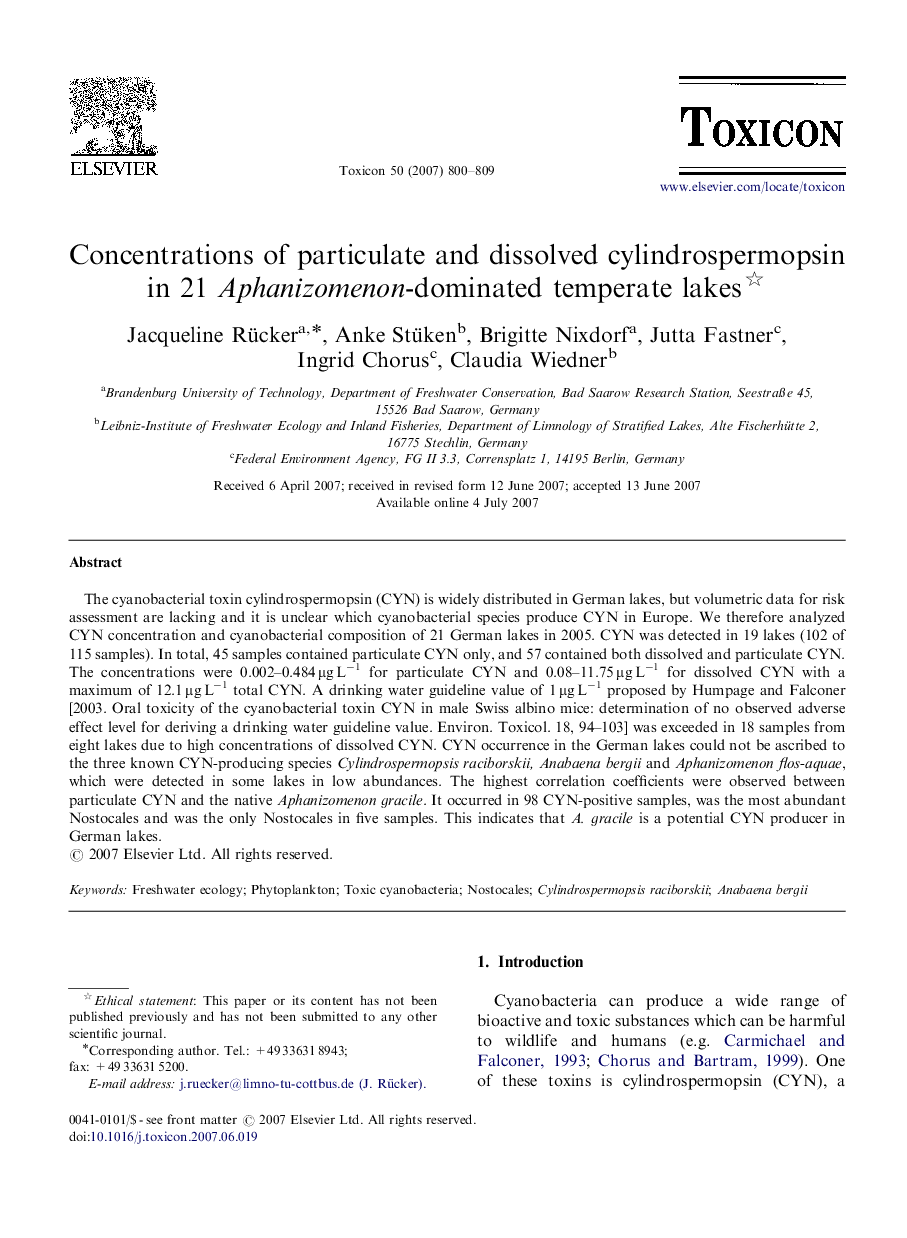| Article ID | Journal | Published Year | Pages | File Type |
|---|---|---|---|---|
| 2066786 | Toxicon | 2007 | 10 Pages |
The cyanobacterial toxin cylindrospermopsin (CYN) is widely distributed in German lakes, but volumetric data for risk assessment are lacking and it is unclear which cyanobacterial species produce CYN in Europe. We therefore analyzed CYN concentration and cyanobacterial composition of 21 German lakes in 2005. CYN was detected in 19 lakes (102 of 115 samples). In total, 45 samples contained particulate CYN only, and 57 contained both dissolved and particulate CYN. The concentrations were 0.002–0.484 μg L−1 for particulate CYN and 0.08–11.75 μg L−1 for dissolved CYN with a maximum of 12.1 μg L−1 total CYN. A drinking water guideline value of 1 μg L−1 proposed by Humpage and Falconer [2003. Oral toxicity of the cyanobacterial toxin CYN in male Swiss albino mice: determination of no observed adverse effect level for deriving a drinking water guideline value. Environ. Toxicol. 18, 94–103] was exceeded in 18 samples from eight lakes due to high concentrations of dissolved CYN. CYN occurrence in the German lakes could not be ascribed to the three known CYN-producing species Cylindrospermopsis raciborskii, Anabaena bergii and Aphanizomenon flos-aquae, which were detected in some lakes in low abundances. The highest correlation coefficients were observed between particulate CYN and the native Aphanizomenon gracile. It occurred in 98 CYN-positive samples, was the most abundant Nostocales and was the only Nostocales in five samples. This indicates that A. gracile is a potential CYN producer in German lakes.
